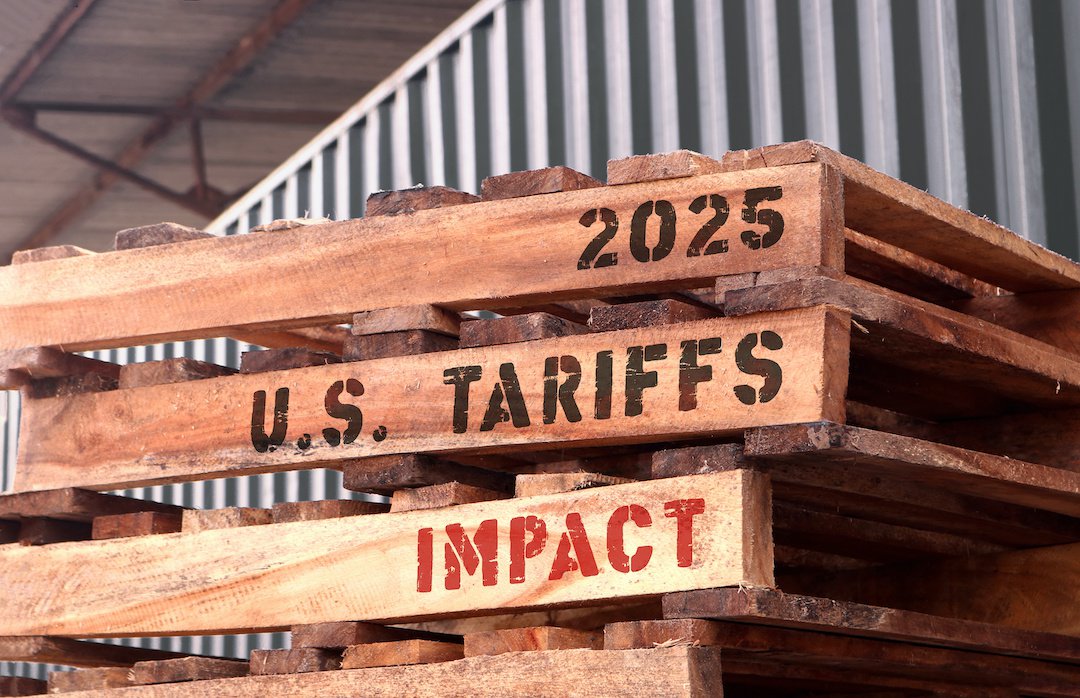The second quarter of 2025 was filled with unexpected, sometimes volatile events in both the geopolitical arena and the financial markets. We endured ongoing confrontation and uncertainty on two fronts: the global tariff war and an unexpected military conflict that erupted in the Middle East. As June ended and summer started, it appeared the worst of the issues were behind us, and some optimism was returning to the markets, but uncertainty remains elevated.
The Global Tariff War Raged On
Early in the second quarter, a quid-pro-quo of heavy tariffs were launched between the U.S. and its primary trading partners, and it appeared that no negotiations were going to occur. For several weeks, we were faced with a growing likelihood that the tariff war was going to lead to global gridlock. By mid-April we had experienced a 19% selloff in the S&P. Simultaneously, the bond markets came under pressure, pushing interest rates violently higher. It was at that point that the administration expressed a willingness to negotiate with our trade partners, and the markets began to stabilize.
In the weeks since, we’ve suffered through ongoing fits and starts with regard to the tariff negotiations, but since negotiations are occurring, it gives us hope that the tariff issues will be resolved before year end.
Farewell to Arms
In mid-June, Israel initiated military attacks against Iran in an attempt to eliminate their nuclear capabilities. During the next week, the U.S. decided to join in the campaign by initiating a strike against three key nuclear installments. This type of event would typically trigger a powerful risk off cycle, driving equity prices sharply lower. However, the financial markets were largely stable during the episode.
As the quarter closed, it appeared that the strikes were successful and that no further conflict would occur. Consequently, the markets continued to push higher through the end of June, with the S&P up nearly 11% for the quarter and 6% for the YTD.
The Fed: Still in a Pickle
As tariff wars and Middle East conflict unfolded, the Fed was under constant pressure from the administration to cut rates. However, inflation continues to be stuck well above the Fed’s long-term target, and virtually all historical experience suggests that tariffs are certain to push inflation even higher.
With the news around tariff efforts changing literally daily, it is nearly impossible for the Fed to estimate the future path for inflation. They have steadfastly communicated that their next rate move will almost certainly be lower, but they have also made it clear that they need more clarity on the tariff situation before they can initiate cuts.
It is broadly assumed that tariffs, wherever they land, will likely dampen economic activity while simultaneously pushing inflation higher.
We believe the Fed is simply looking for some level of certainty about where the average tariff rate will land before they begin cutting rates. We would expect that the administration would like to have these issues nearing resolution as we approach year-end. For that reason, we see the Fed rate cuts starting late in the year.
The Outlook
The resilience of the equity market is encouraging and welcome. As the market climbs the “wall of worry,” there is lingering concern that investors may have become “comfortably numb” — the markets seem to have desensitized to what would normally be quite alarming events. Equity valuations have pushed back up to historically high levels, which is cautionary given the amount of uncertainty still in the system. The tariff campaign will continue to throw surprises our way for some time.
There is no precedent for what ultimate impact tariffs will have on growth and profitability — and there is a risk that both will suffer in the early stages after tariff implementation. It will temporarily push inflation even higher than it is now, with tariffs calming down by December. Paired with the potential for lower rates in early 2026, consumer sentiment may see an uptick with positive economic momentum heading into the new year.
As you digest the news of the quarter, remember financial teams are here to provide you with peace of mind about your financial future. Anchoring to a sound, long-term financial plan and investment strategy will help everyone weather storms like these.
Eric Kelley is the chief investment officer at UMB Bank.
